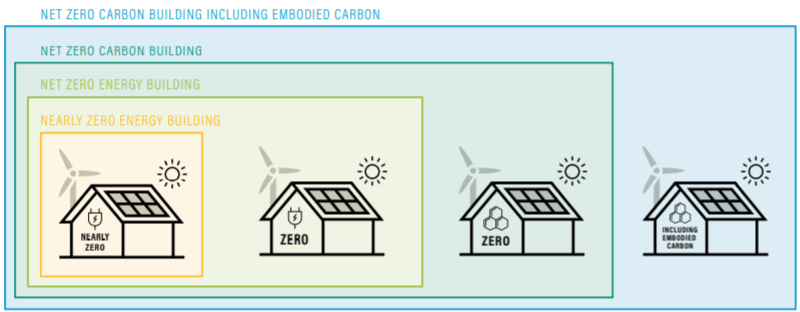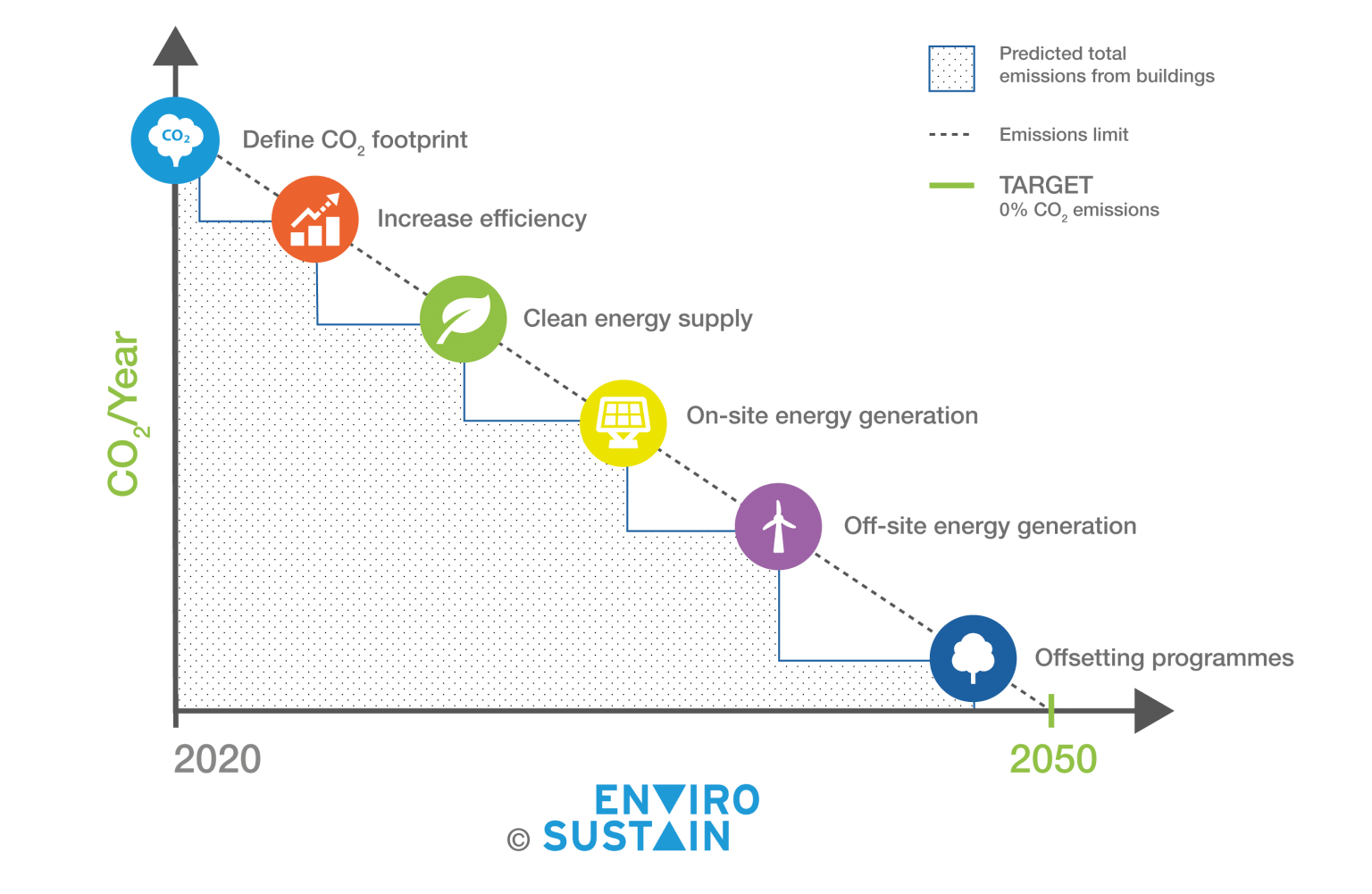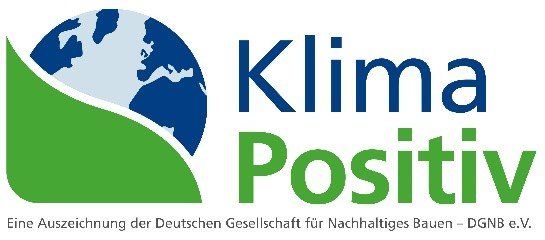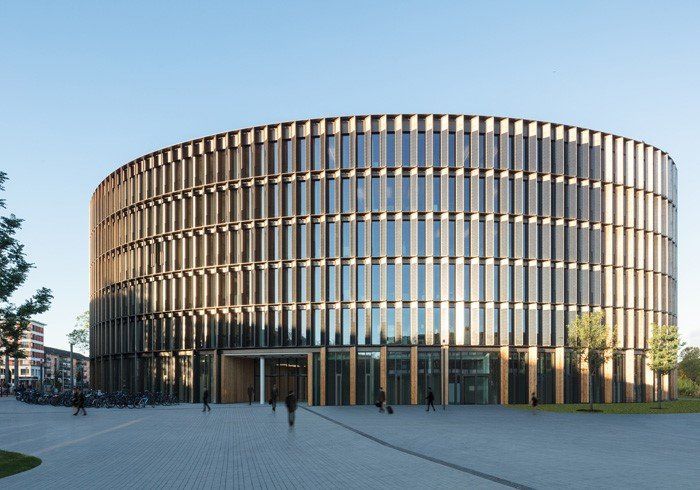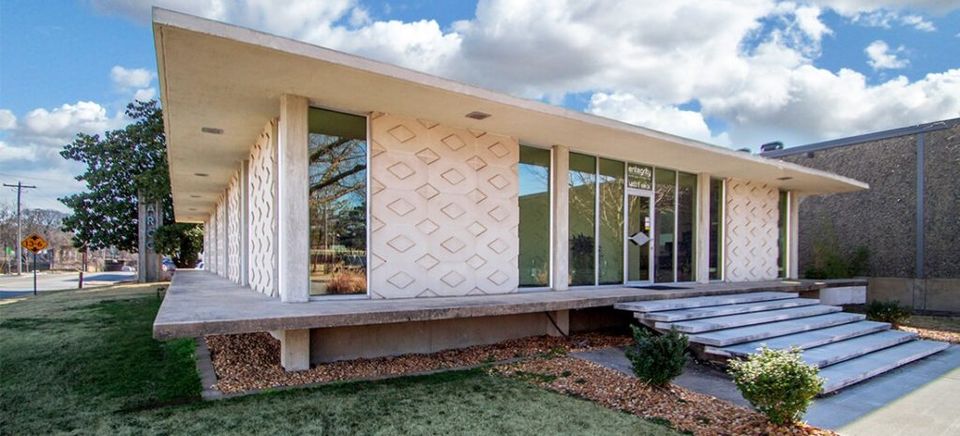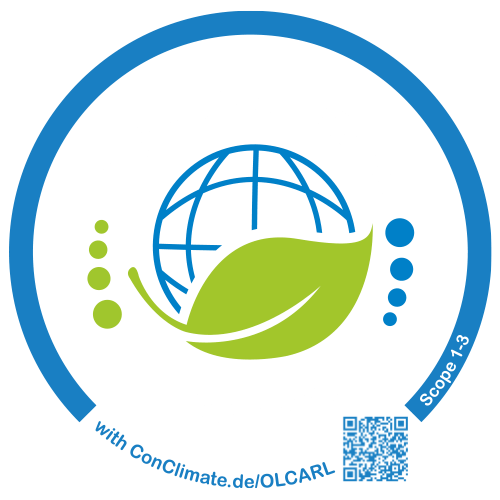The “carbdown” is on! Which net zero scheme is the right one for you?
Wake-up call
The carbon clock is ticking…faster than most people think. On the basis of the special report provided by the Intergovernmental Panel on Climate Change (IPCC), the Mercator Research Institute on Global Commons and Climate Change (MCC) has found that our CO2 budget for staying below the crucial 1.5°C threshold will be exhausted in around seven years. This means that our set climate goal should not be 2050, as defined in the Paris Agreement, but 2027. Does this make you feel uneasy? It should!
In response to the Paris Agreement, the EU presented the Green Deal on December 11, 2019, with the goal of becoming the first climate-neutral continent by 2050. Among other things, this roadmap envisages promoting decarbonisation of the energy sector and increasing the energy efficiency of buildings.
Why is decarbonisation important and how does it work?
In its EU taxonomy report, the Technical Expert Group (TEG) on Sustainable Finance has shown that buildings account for around 40% of energy consumption and around 36% of CO2emissions in the EU.
At the same time, CO2 emissions from building material production and processing in building construction are increasing. This is a development in the wrong direction!
This is specifically outlined in the EU taxonomy’s technical appendix, which states that, taking into account the goal of operating climate-neutral buildings in Europe by 2050, new buildings have to be planned and built climate-neutrally between 2021 and 2050. The earlier this is implemented, the sooner the 2050 target can realistically be met. On the one hand, this means that efficiency-enhancing reconstructions must be carried out for a large part of the building stock and on the other, a paradigm shift in planning needs to be accelerated. The process should begin with the investors, who should focus on lower-risk project developments to get the ball rolling.
The EU taxonomy was developed to better manage this process; it presents four basic principles relevant for CO2 reduction:
1. Construction of new buildings: to lower primary energy demand by 20% of that specified in national building regulations
2. Reconstruction and renovation of existing buildings: In accordance with the Energy Performance of Buildings Directive (EPBD) or 30% less primary energy demand than in the baseline state
3. Individual measures and services
4. Purchase and ownership: Buildings constructed after 2021 must meet the standard stated under “1. Construction of new buildings”.
Buildings constructed before 2021 must be in the top 15% of the national building stock in terms of their primary energy demand.
Today, only 1% of buildings meet the requirements of a net zero carbon building”.
For clarification, the WRI provides an overview of zero building concepts and what each of them encompasses:
- Net Zero Carbon District – A group of energy efficient buildings within an urban district, supplied with renewable energy through nearby off-site sources.
- Net Zero Carbon Building Portfolio – A group of energy efficient buildings that share similar characteristics and fall under the same ownership or management. All buildings are supplied with renewable energy, which generates electricity and heat within the portfolio rather than at individual building level.
- Nearly Zero Energy Building – An energy efficient building that supplies most of its annual energy consumption through on-site or nearby renewable energy sources.
- Net Zero Energy Building – An energy efficient building that supplies all of its annual energy use through on-site or nearby renewable energy sources on a net basis. This means that the building supplies at least the same amount of renewable energy to the grid than it uses from the grid.
- Net Zero Carbon Building – An energy efficient building that produces or procures enough on-site carbon-free renewable energy to meet building operation’s annual energy use.
- Net Zero Carbon Building, including embodied carbon – An energy efficient building that produces or procures enough on-site carbon-free renewable energy to meet building operation’s annual energy use, and also over its life cycle (meaning it compensates for the carbon embodied in the building’s construction and materials).
Figure 1: Differences to consider at building level according to WRI.
Best of five – Finding the best scheme to achieve your net zero goal
Since building construction and operation account for around 40% of global CO2 emissions, various initiatives have been launched in recent years to advance the climate goals set at the Paris Climate Change Conference in 2015. We would like to give an overview and present our opinion on the most important schemes. After all, the earlier a suitable strategy is selected, the sooner the goal of climate neutrality of buildings can be achieved.
General consensus exists around the following steps that make up a successful climate protection roadmap:
1. Define CO2 footprint
2. Increase energy efficiency
3. Renewable energy supply
4. Generation of renewable energies on-site
5. Generation of renewable energies off-site
6. Use of offsetting programmes as a last resort
Figure 2: The elements that make up a successful climate protection roadmap, own figure.
Below, we present and compare selected schemes to support the “carbdown” of your portfolio:
Net Zero Commitment (World Green Building Council)
Source: World Green Building Council.
In 2017, the World Green Building Council (WorldGBC) launched the “Advancing Net Zero” initiative to help advance CO2 emissions reduction in the building sector. The aim is to ensure that all new construction projects are CO2-neutral by 2030, while advocating for all existing buildings to be CO2-neutral in operation by 2050.
All project signatories commit to publishing their performance data no later than two years after joining the commitment. To this end, the WorldGBC provides a template to help with consistent data collection for each building. In addition, a decarbonisation plan with specific goals and information on the fund’s progress is requested, which can be derived from the building-related data, among other things.
Signatories of the commitment are also expected to disclose information about the implementation of set goals and measures. This ensures commitments made are translated into real action.
The commitment’s guiding principles are as follows:
1. Measure and disclose CO2 emissions
2. Reduce energy consumption through efficient operation and technology
3. Compensate CO2 emissions through renewable energy, preferably in the following order (priority in descending order): on-site produced energy from renewable sources, nearby or off-site renewable energy production; or CO2 compensation programme
4. Improve accuracy and verifiability of the data collected. Over time, this should be accompanied by considerations of the construction- and building material-related CO2emissions produced. Another goal should be to reduce water consumption as well as waste production.
Climate Positive (DGNB e.V.)
Source: DGNB e.V.
The German Sustainable Building Council (DGNB) has launched “Climate Positive“, an award in recognition of buildings that play an important role in CO2 emissions reduction. Specifically, the award honours buildings in operation that demonstrate a balanced, or ideally, negative annual carbon footprint.
Building performance data is collected and evaluated for a period of one year, on the basis of which absolute greenhouse gas emissions are calculated. Here, user electricity consumption and all renewable energy produced on-site are taken into account to calculate the overall balance. Further, purchasing off-site energy requires proof that the supplier guarantees exclusive use and actively contributes to the German energy-turnaround.
Furthermore, the recognition of off-site energy sources requires proof of the exclusivity and additionality of production. The DGNB does not consider green electricity certificates for compensation as these do not promote grid expansion. The DGNB focuses on three core elements:
- High energy efficiency, meaningful use of building technology and automation, and user involvement and education
- Use of renewable energy
- Feeding self-produced energy back into the grid
Following successful building certification, it is valid for three years and can be renewed on an annual basis.
LEED® Zero (U.S. Green Building Council)
Source: U.S. Green Building Council.
In addition to its LEED® certification system, the U.S. Green Building Council (USGBC) has introduced the LEED® Zero certification scheme for new and existing buildings. Buildings that have already been certified in accordance with LEED® can qualify for verification of achieving net zero performance.
Similar to existing certifications, the issued LEED® Zero certification is valid for three years and requires the provision of 12 months of performance data. Data is collected for the categories LEED® Zero Carbon Emissions, LEED® Zero Energy Use, LEED® Zero Water Use and LEED® Zero Waste. Certification can also be achieved individually in these categories:
- LEED Zero Energy considers the energy generated on-site or the off-site energy delivered to the location minus the gains of on-site generated renewable energy.
- LEED Zero Water rewards efforts to use rainwater or grey water and puts it into relation to the amount of drinking water provided to the building through the public network.
- LEED Zero Waste requires achieving a TRUE Zero Waste Platinum certificate. This means, among other things, that almost all waste must be transferred into circular waste management systems without being deposited or incinerated.
- LEED® Zero Carbon Emissions focuses on the building’s carbon footprint, which is calculated on the basis of carbon emissions produced and carbon emissions avoided or offset.
Zero Carbon Certification (International Living Future Institute)
Source: International Living Future Institute.
The International Living Future Institute‘s (ILFI) Zero Carbon Certification claims to be the first worldwide Zero Carbon third-party certified standard requiring projects to fully decarbonise. The self-declared goal is as follows:
“One hundred percent of the operational energy use associated with the project must be offset by new on- or off-site renewable energy. One hundred percent of the embodied carbon emissions impacts associated with the construction and materials of the project must be disclosed and offset.”
Buildings must demonstrate net zero carbon operations based on a one-year performance period. In general, the project has to account for its embodied carbon impact resulting from construction and building material through approved carbon offset programmes. Regarding energy generation, new projects may not utilise on-site combustion. To achieve certification, the project must further be able to show it has achieved embodied carbon reduction in terms of the materials used in comparison to a reference building.
Net Zero Operational Carbon (London Energy Transformation Initiative)
Source: London Energy Transformation Initiative.
In collaboration with the UK Green Building Council and the Better Buildings Partnership, the London Energy Transformation Initiative (LETI) provides Ten Key Requirements for New Buildings to showcase how new buildings can operate at net zero by 2030.
The first requirement is to strive for the lowest possible energy use. Annual energy consumption and gains from renewable energy generation on-site must be measured and independently verified. This must be done annually for the first five years to ensure reliable data is available to fulfil further requirements.
In addition, the CO2 contained in the materials used and generated in construction processes must be collected. This collected data must be verified by independent third parties post-construction. Reducing embodied carbon is a crucial requirement.
Considering the supply of the project, no fossil fuels should be used for heating, cooling or electricity supply. In addition to reporting on annual CO2 emissions, it is also important to ensure that on-site renewable energy sources make a significant contribution to covering energy demand. Further, intelligent energy demand response and storage measures should be incorporated into the decarbonisation strategy for new buildings. This also includes reporting on the building annual peak energy demand and discussing with the utility provider.
Finally, a carbon balance calculation should be made. The minimum requirement is for buildings to achieve net zero carbon balance; however, should this not be attainable through required measures such as on-site renewable energy generation or investments into additional off-site renewable energy capacity, then a 15 year renewable energy power purchase agreement (PPA) should be made.
To date, no certified LETI Net Zero Operational Carbon projects exist.
Which certified net zero projects are leading the way?
Below, we introduce you to a few exemplary projects that have been certified for their net zero carbon performance and innovative efficiency solutions:
- Freiburg City Hall is the largest plus-energy-building in Europe, certified in accordance with the DGNB Climate Positive certification. Among others, the building impresses with its energy-efficient envelope, the use of groundwater in conjunction with a heat pump for heating and cooling, and photovoltaics for electricity generation.
Image 1: Freiburg City Hall. Source: DGNB.
- The first building project certified in accordance with the LEED Zero (LEED Zero Energy) scheme are the “Entegrity Headquarters” in the U.S. As a refurbished building from the 1950s, the planners especially focused on maximising user comfort and individual adaptability to the desired indoor climate. On the basis of energy modeling, energy reduction strategies were determined and combined with energy efficiency and solar energy measures to bring the building to net zero. The building has also been awarded ILFI’s Zero Energy certification.
Image 2:
Entegrity Headquarters, US. Source: USGBC.
- The first net zero carbon building certified under the ILFI Zero Carbon Standard is the Google office building located at Pancras Square in London. Google has committed to strict sustainability goals and their implementation. The building’s operational energy use was reduced, along with a strategic selection of building materials that helped reduce embodied carbon. Finally, through carbon offset programmes the building complex reached carbon neutrality. The long-term goal is to integrate renewable energies more strongly on-site and to reduce the embodied carbon in materials and resulting from construction processes even further, and ultimately to design and construct buildings that bind more CO2than they emit.
Image 3: Pancras Square, London, UK. Quelle: Google.
Net zero district: Residential, retail, office
The 21,000 m² net zero district project Brucklyn with residential, office and leisure facilities is currently under completion in the south of Erlangen, Germany, and will come into operation in 2020.
The campus’ sustainable energy concept foresees energy generation, storage and distribution on the campus itself. Three compact combined heat and power plants generate electricity on the one hand and on the other, use the generated heat for heating and cooling. In addition, the power plants can also be operated with hydrogen.
It should be emphasised that the Brucklyn project is the first district in the world to feature a chemical hydrogen storage system, which allows for generated electricity to be stored at high-density. In addition, batteries are used to smooth out peaks in demand. This ensures efficient functioning of the energy system. Energy generation will be supported by photovoltaic panels installed on roofs and partially in building façades. Surplus energy is stored in batteries and the hydrogen storage system, to ensure energy is provided during low-sun times. Further, a near-surface geothermal array allows for geothermal energy use for heating and hot water production. Heat pumps thus enable efficient and climate neutral energy generation.
Figure 3: Interconnected energy system with closely integrated sub-systems of heating, cooling, and electricity. Source: Union Investment Real Estate.
Can we achieve our net zero goals?
First and foremost, every investor, fund manager and asset manager must recognise and understand the urgency of the situation and the risk that arises from not taking immediate action. The European Union-funded project Carbon Risk Real Estate Monitor (CRREM) has illustrated this risk and viable approaches stakeholders can take in its Stranded Asset analysis.
To support our clients in their decision-making, EnviroSustain offers individual decarbonisation assessments for individual funds as well as assets. These assessments address and discuss necessary steps and measures for increasing energy efficiency, the use of on-site and off-site renewable energies and, if necessary, CO2 compensation measures. The resulting climate protection roadmap can be used as basis for setting priorities and budget planning.
If we are to reach our net zero goals, existing buildings should immediately undergo such an assessment. Further, it is recommended to consider certifying the project in accordance with an established net zero certification system or under a climate protection initiative (as introduced earlier).
Regarding new building projects, the goals of climate-neutral construction and operation must be taken into account with immediate effect. When purchasing project developments, an ESG due diligence is advisable in order to better assess the risks and potentials with regard to the ESG strategy of the fund prior to the purchase.
All in all, a feasible task, but its success depends largely on those who have to make the right decisions now.









Head Office, Berlin,
Neue Grünstraße 17 | 18 Hof 1 | TRH 3
10179 Berlin
© ES EnviroSustain GmbH 2021


